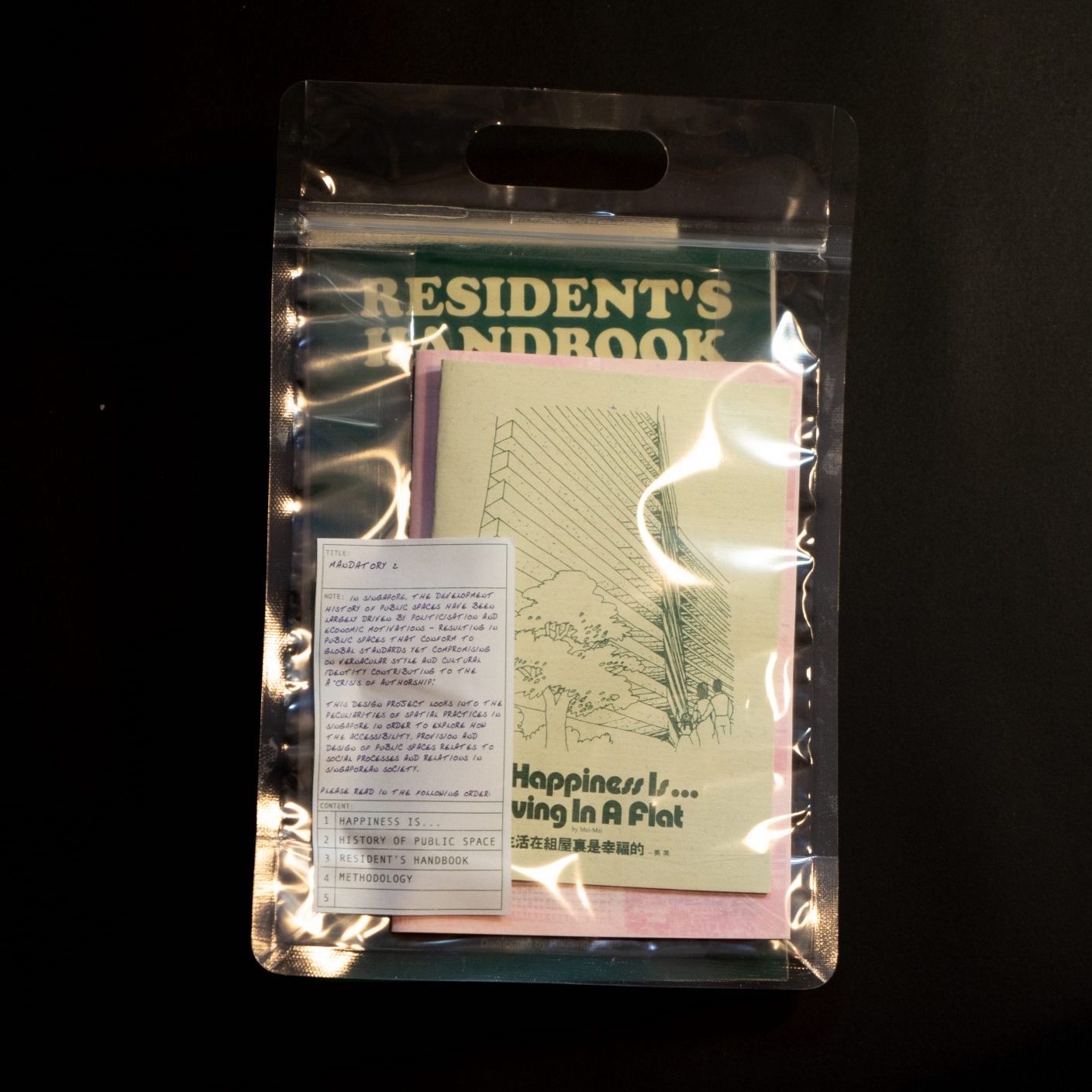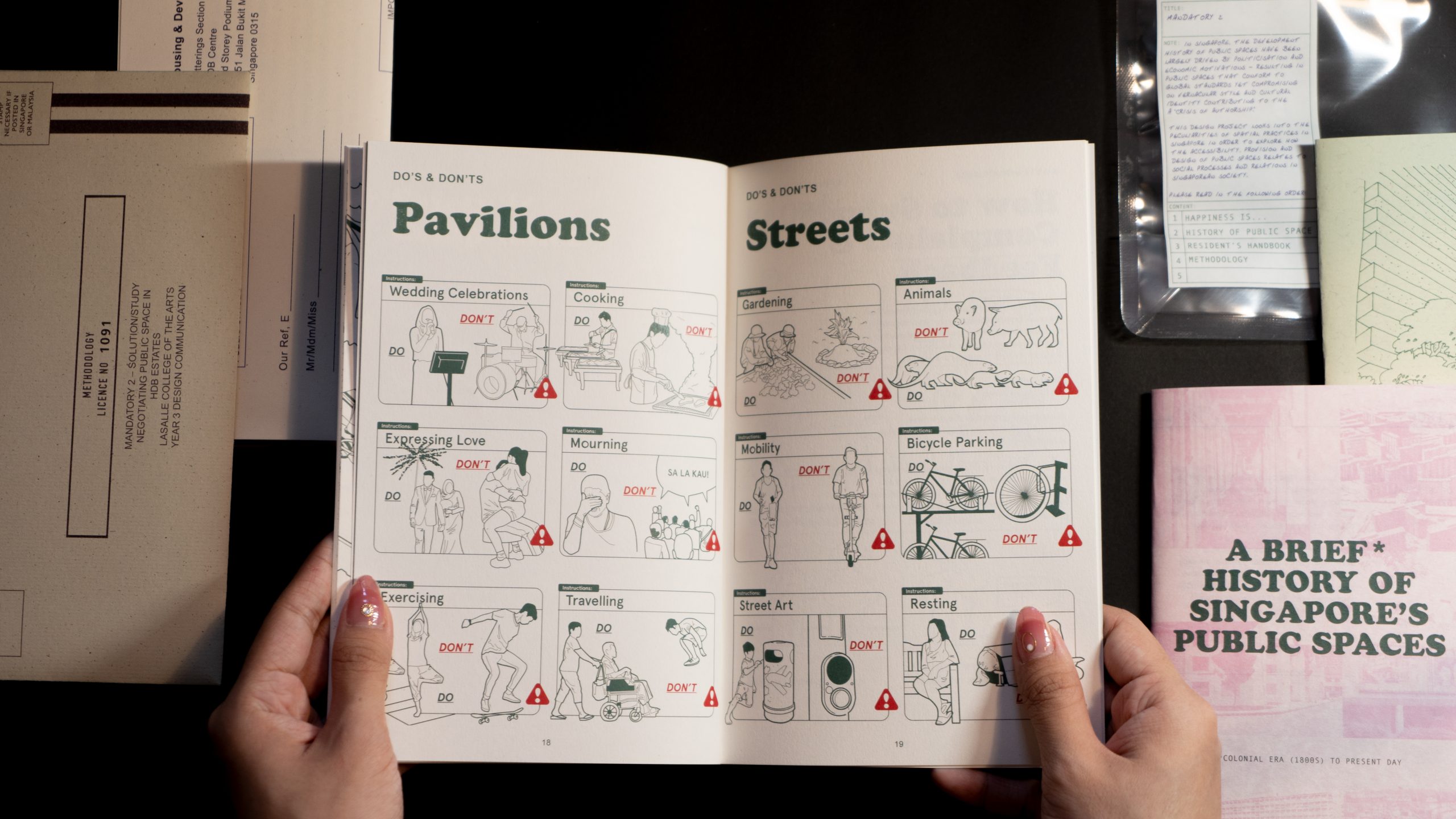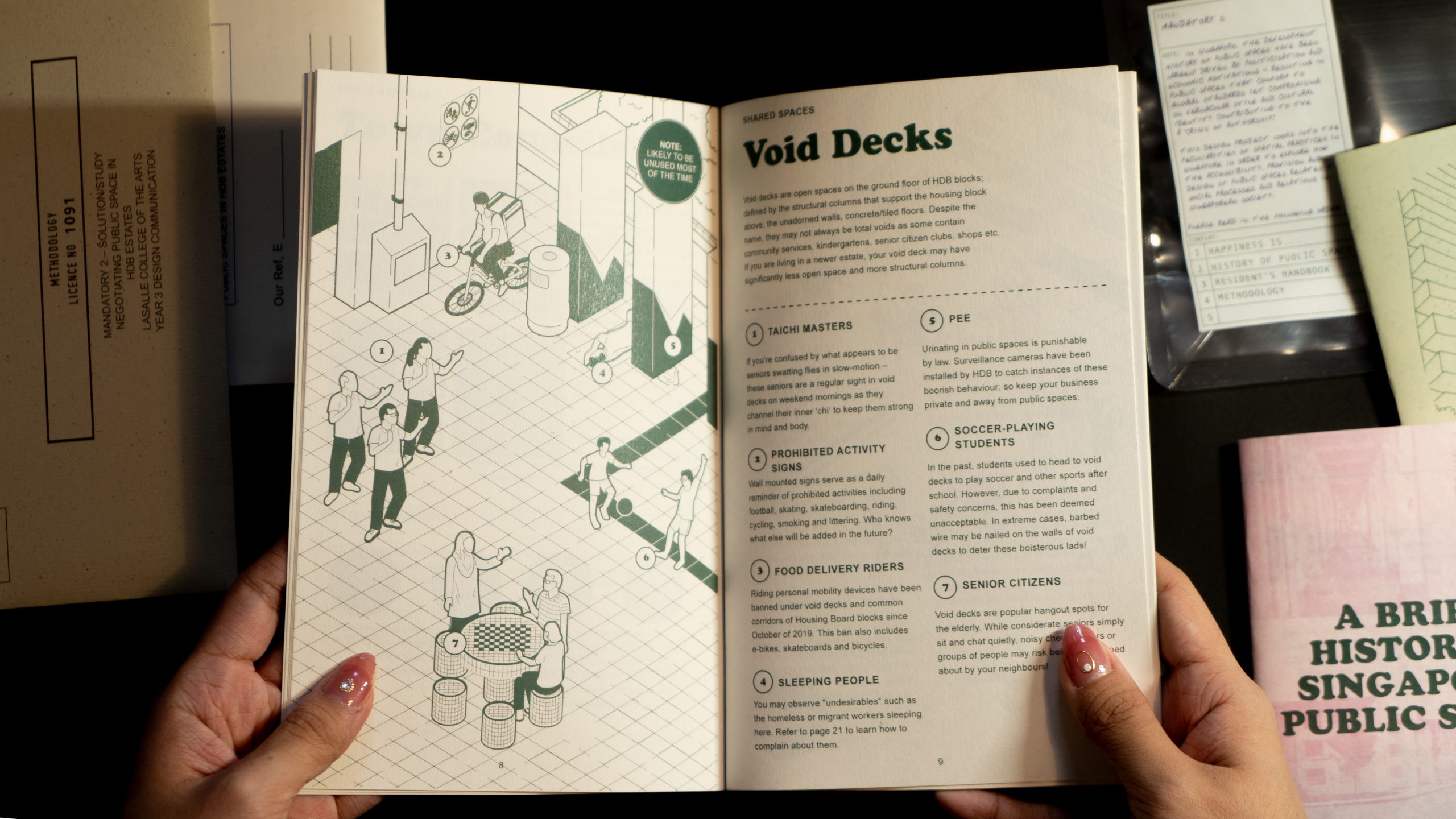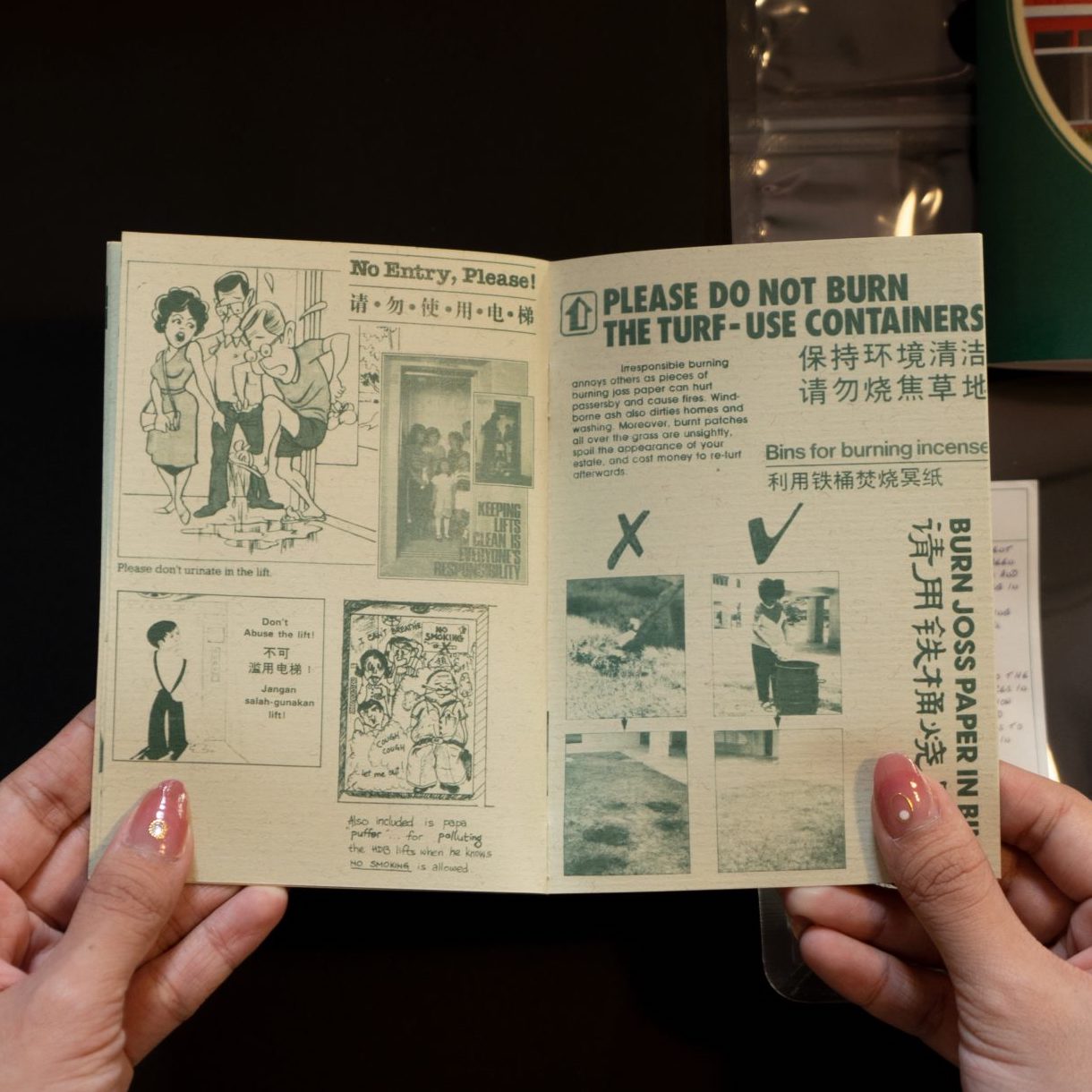RESIDENTS’ KIT


Background
In Singapore, the development history of public spaces have been categorised by its hegemony. Where the creation of public space is, ultimately, an act of building institutionalised demarcations of power structures that contest the access, social capital and sense of ownership among communities.
Final Year Project
LASALLE College of the Arts
An inquiry into spatial practices in public spaces in Singapore’s public housing estates, or colloquially known as HDB flats (Housing & Development Board), in order to explore how the accessibility, provision and design of public spaces relates to social processes and relations in Singaporean society.
This research does not aim to provide solutions for urban planning or architectural issues. Instead, it seeks to utilise visual methods to examine spatial practices in public spaces. At the level of spatial practices, the desired social outcomes are not always translated after the actualisation of these planned spaces.
Adopting the Situationists’ technique of dérive as the primary research method, multiple hour-long walks were conducted in the neighbourhoods of Yew Tee and Punggol over various days at different times of day. Focus groups with residents aged between 18 – 35 were also conducted to hear from the residents’ thoughts and feelings towards their neighbourhood.
Read more about the research process here.
LASALLE College of the Arts
An inquiry into spatial practices in public spaces in Singapore’s public housing estates, or colloquially known as HDB flats (Housing & Development Board), in order to explore how the accessibility, provision and design of public spaces relates to social processes and relations in Singaporean society.
This research does not aim to provide solutions for urban planning or architectural issues. Instead, it seeks to utilise visual methods to examine spatial practices in public spaces. At the level of spatial practices, the desired social outcomes are not always translated after the actualisation of these planned spaces.
Adopting the Situationists’ technique of dérive as the primary research method, multiple hour-long walks were conducted in the neighbourhoods of Yew Tee and Punggol over various days at different times of day. Focus groups with residents aged between 18 – 35 were also conducted to hear from the residents’ thoughts and feelings towards their neighbourhood.
Read more about the research process here.

The Kit
This kit comprises of various printed materials such as handbooks, zines and letters to explore the spatial practices in Singapore’s public spaces.
The handbook, inspired by actual Residents’ Handbooks that were distributed by HDB in the 70’s, establishes the current state of public spaces in Singapore’s HDB estates.




The kit comprises of a zine that uses material from Our Home to understand Singaporean identity and etiquette surrounding HDB estates from 1972 to 1989.
Our Home was a free publication distributed to all HDB tenants from 1972 to 1989 that conveyed notions of Singaporean identity – one that was pluralistic and family-centred. Through the compilation and organisation of common themes, it acts as a means to understand traditional social norms & ideals, providing context into the topic.
Read more about it here.
Our Home was a free publication distributed to all HDB tenants from 1972 to 1989 that conveyed notions of Singaporean identity – one that was pluralistic and family-centred. Through the compilation and organisation of common themes, it acts as a means to understand traditional social norms & ideals, providing context into the topic.
Read more about it here.